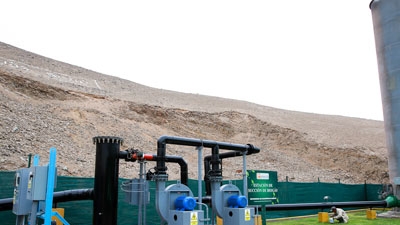The former waste dump known as La Cucaracha has been transformed into a model sanitary landfill with support from the World Bank. It is a modern plant that treats part of the waste produced daily in Lima.
The project, which began in 2003 in coordination with the Municipality of Callao, has the technology to take advantage of gases produced by waste decomposition (CO2e).
The treatment plant captures the gases and processes them following Kyoto Protocol regulations. This facilitates their use in the generation of electric energy or natural gas for vehicle fuel.
The plant reduces CO2e emissions by 61.02 tons per year, significantly helping to mitigate the effects of climate change.
If the project is replicated, it could meet Peru’s high demand for sanitary landfills.

